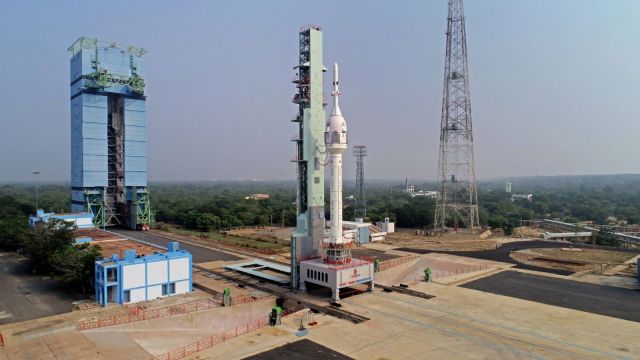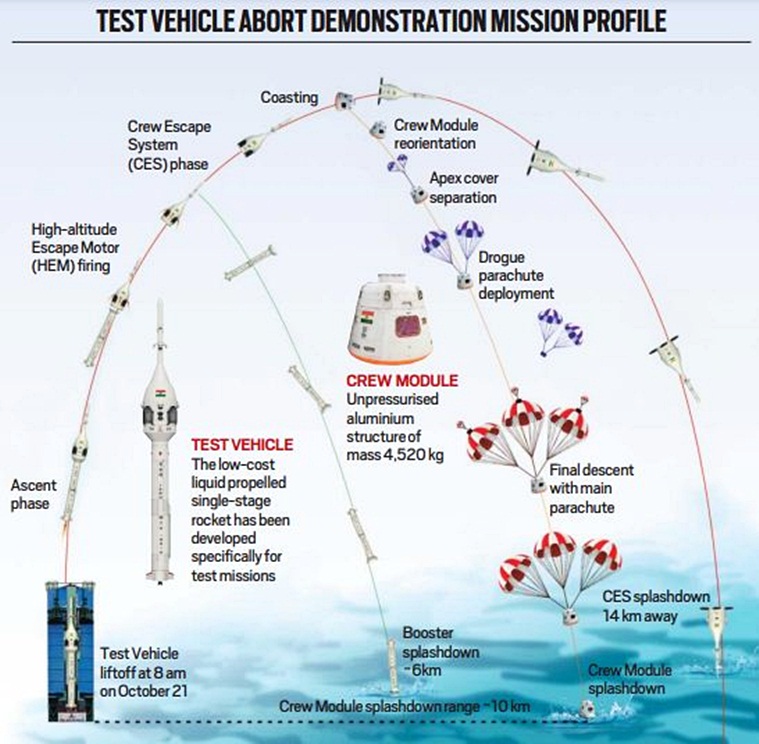ISRO’s Gaganyaan TV-D1 test flight today: Everything you need to know
ISRO on Sautrday will conduct the first test for the upcoming Gaganyaan mission, observing the performance of the crew escape system.
 The launch vehicle for the Gaganyaan TV-D1 Test Flight at Satish Dhawan Space Centre in Sriharikota. (ISRO via X.com)
The launch vehicle for the Gaganyaan TV-D1 Test Flight at Satish Dhawan Space Centre in Sriharikota. (ISRO via X.com) After the success of the Chandrayaan-3 mission, the Indian Space Research Organisation (ISRO) on Saturday is set to take one of the first steps on its journey to launching a crewed spacecraft with the Gaganyaan mission. The Flight Test Vehicle Abort Mission 1 (TV-D1) is set to launch from the Satish Dhawan Space Centre in Sriharikota at 7.30 AM IST on October 21.
The mission will test the performance of the Crew Escape System on the crew module of the Gaganyaan mission. Basically, it will test the safety mechanism that will allow the crew of the Gaganyaan mission to escape the spacecraft in case the mission is aborted due to a malfunction.
During the test, a single-engine rocket will carry an early depressurised version of the Gaganyaan crew module to a height of about 17 kilometres. At this point, an abort signal will be sent. If the escape system works, it crew module will separate from the rocket and deploy its parachutes before splashing down in the Bay of Bengal. The test itself will be uncrewed.

For the actual Gaganyaan mission, ISRO plans to demonstrate its human spaceflight capability by taking a crewed spacecraft to an altitude of about 400 kilometres above the Earth on a three-day mission. After that, the mission will bring them back safely to Earth with a splash down in Indian waters.
Unlike the test mission tomorrow, which will use a single-stage rocket built for testing, the actual Gaganyaan mission will use the same LVM3 (Launch Vehicle Mark-3) rocket that was used for the Chandrayaan-3 mission.
If the main Gaganyaan mission succeeds, it will put India on a list of just four countries that can launch a crewed spacecraft by itself. The list currently includes four members—the United States, the Soviet Union and China. China also has a space station in orbit with three astronauts residing in it.
Sending an astronaut into space will mark the beginning of the space agency’s journey towards loftier ambitions. Indian Prime Minister Narendra Modi chaired a high-level meeting with ISRO where he gave the agency two targets—set up an Indian space station by 2035 and take an Indian astronaut to the Moon in 2040. He also wanted ISRO to work towards a Venus Orbiter Mission and a Mars Lander mission.







